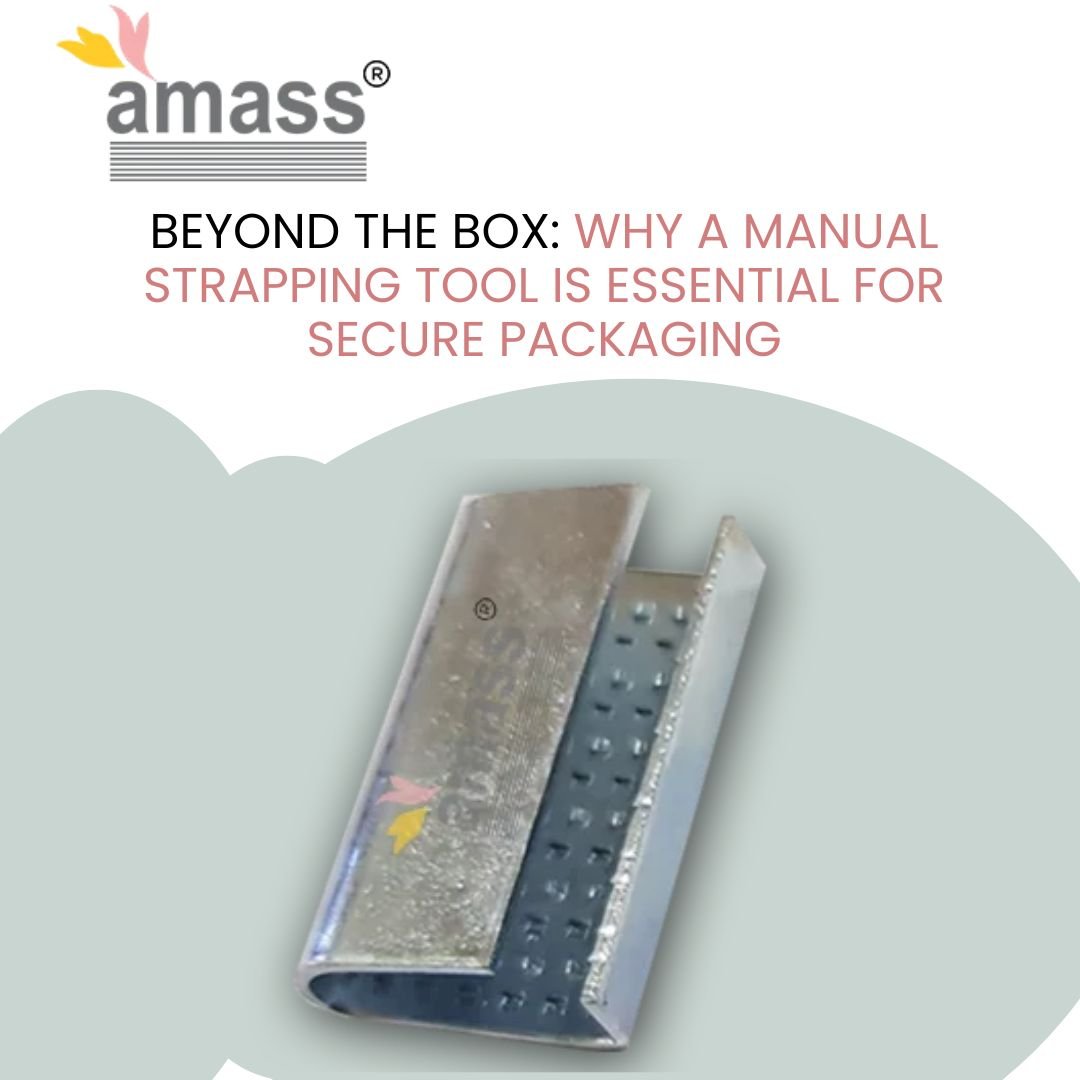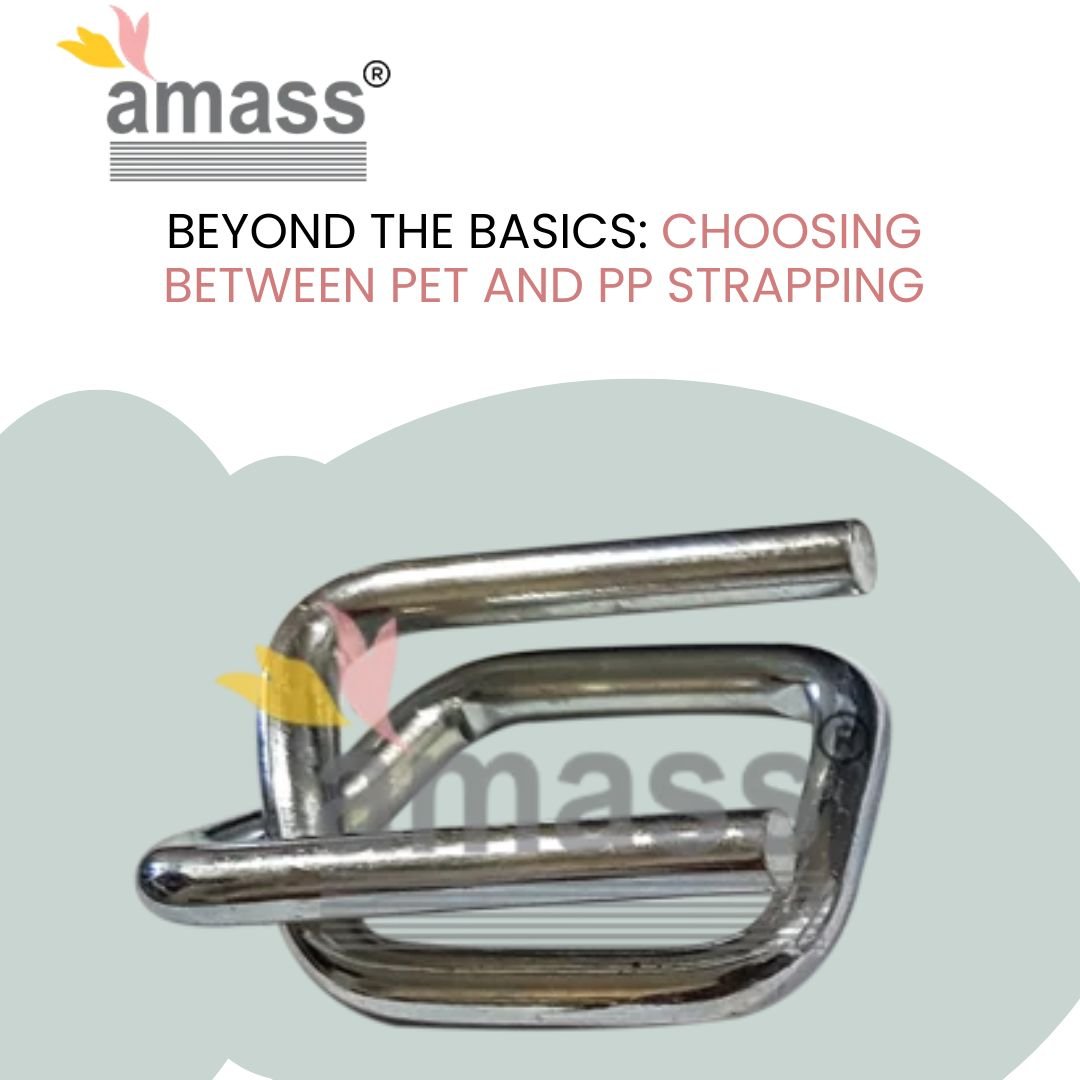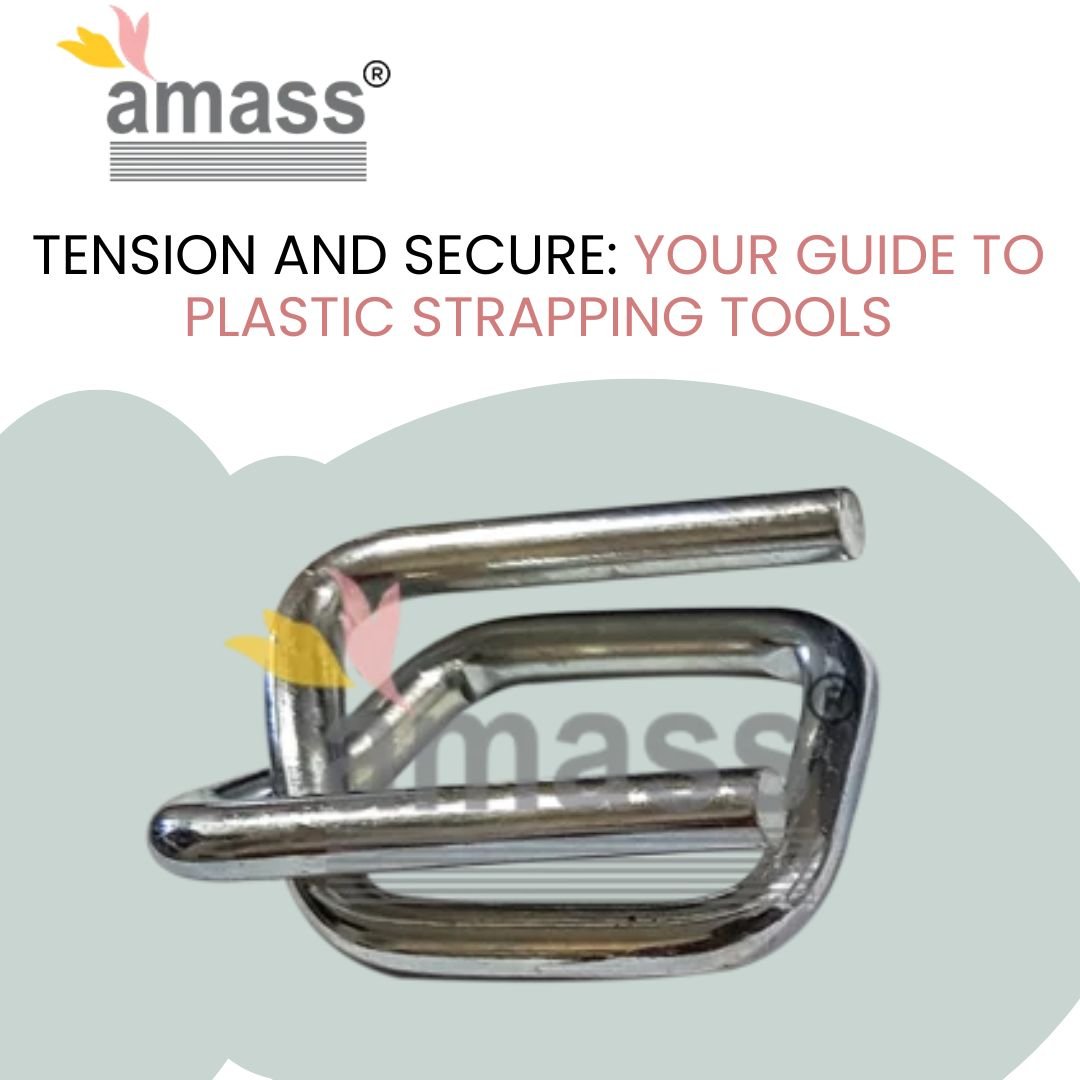Beyond the Box: Why a Manual Strapping Tool is Essential for Secure Packaging?

Tension and Secure: Your Guide to Plastic Strapping Tools
September 9, 2025
Beyond the Basics: Choosing Between PET and PP Strapping
September 11, 2025In today’s dynamic shipping and manufacturing landscape, securing your packages isn’t just about slapping on tape and hoping for the best. It involves a combination of the right materials, tools, and techniques—one of which often flies under the radar but has a massive impact on packaging security: the manual strapping tool. Though technology has ushered in automatic and semi-automatic machines, manual strapping tools remain vital, especially for small and medium businesses prioritizing flexibility, precision, and cost-effectiveness.
At Amass Strapping Solutions, we believe packaging excellence begins with the right tools. This blog delves into why a manual strapping tool is indispensable for reliable packaging—going beyond the box to uncover the real value.
Cost-Effective Packaging Solution for All Budgets
Manual strapping tools excel in cost efficiency, offering high-quality packaging capabilities without a heavy price tag. Unlike automatic machines, which can require hefty upfront investments running into lakhs, manual tools provide a budget-friendly option. This makes them ideal for startups, small businesses, and seasonal operations where packaging needs fluctuate.
The affordability factor allows businesses to bring professional-grade strapping into their packing process without compromising other areas. Plus, manual tools reduce dependency on expensive consumables or power sources, further cutting costs.
Small manufacturers and local distributors often find manual tools enable them to maintain secure strapping standards while staying financially nimble—that’s real business agility in action.
Portability and Versatility: Strapping Wherever You Need It
One of the standout advantages of manual strapping tools is their portability. Without the need for electricity, batteries, or compressed air, these tools can be taken anywhere. Whether working in remote warehouses, outdoor construction sites, or shifting between packaging lines, manual tools offer unparalleled flexibility.
This mobility is particularly crucial in sectors like agriculture, logistics, and exports where packaging locations may vary daily. Manual tools can also be passed between shifts or different teams effortlessly, ideal for operations that require multi-site or ad hoc packing.
Moreover, manual tools are versatile, compatible with a wide range of strapping materials including Polypropylene (PP), Polyester (PET), and metal bands. This multi-material adaptability means businesses can use one tool across diverse product lines, reducing equipment complexity and costs.
User-Friendly Operation: Making Strapping Easy for Everyone
Manual strapping tools shine in their simplicity. They don’t require extensive training or complex setup, enabling operators of all skill levels to secure packages confidently. Their straightforward design means new workers quickly learn to operate them, speeding up onboarding and maintaining productivity.
This ease of use is essential in environments where turnover rates are high or when temporary workers are employed seasonally. Operators appreciate tools that do the job reliably without fuss, improving morale as well as output.
Unlike automated machinery, manual tools allow users tactile feedback during strapping, ensuring tension is applied appropriately and packages aren’t over-compressed or too loosely strapped—a subtle control that can mean the difference between intact shipments and damaged goods.
Customizable Tension Control for Delicate and Diverse Loads
One of the most compelling reasons to choose manual strapping is the custom control over tension it offers. Unlike machines preset to specific tension levels, manual tools empower the operator to adjust the strap tightness on the fly.
This feature is invaluable when dealing with fragile, oddly shaped, or sensitive goods. Over-tensioning can damage delicate products; under-tensioning risks packages loosening during transit. The manual tool lets operators fine-tune tension based on the load’s unique demands, improving packaging integrity while preventing damage.
Custom tension control also improves efficiency when strapping varying load sizes and materials in the same facility, avoiding the time-consuming process of recalibrating machines.
Low Maintenance with High Reliability: A Long-Term Packaging Partner
Manual strapping tools win on reliability and longevity. They have comparatively few moving parts, which means less wear and tear and fewer breakdowns than more complex automated systems. Routine maintenance usually boils down to cleaning and occasional lubrication—simple tasks that don’t require specialized technicians or costly downtime.
Fewer replacement parts and easy repairs translate into reduced total cost of ownership, particularly for businesses that cannot afford interruptions or expensive service contracts.
High reliability ensures consistent output quality during peak packaging periods, maintaining shipment standards and customer satisfaction.
Ideal for Low-Volume and Ad Hoc Packaging Operations
If your business handles packaging only occasionally or in small volumes, a manual strapping tool is your best bet. Low-volume strapping rarely justifies investing in costly machinery that sits idle much of the time. Manual tools let you scale packaging as needed without upfront financial pressure or operational complexity.
From seasonal product runs to special projects, flexibility without overspending is key. Manual tools enable precise, secure strapping without tying up capital in machines best suited for mass production.
Enhanced Operator Control Reduces Packaging Damage
Greater operator control over the strapping process is another often overlooked benefit of manual tools. Operators can sense resistance, tension changes, and strap alignment, allowing them to correct potential problems immediately.
This hands-on approach reduces the chances of damaging expensive products or packaging materials, compared to automated systems that apply preset tension regardless of load behavior.
When safeguarding delicate or high-value items, manual strapping lowers the risk of costly returns and reputational damage.
Complementing Automation: The Best of Both Worlds
While automation dominates many large-scale packaging operations, manual strapping tools remain essential complementary equipment. Many facilities employ manual tools alongside machines to manage overflow, package unusual sizes, or perform emergency repairs on the go.
Amass Strapping Solutions advises clients to integrate manual tools into their packaging workflows strategically—using machines for speed and volume, and manual tools for flexibility and fine control.
Such hybrid approaches optimize overall efficiency, reduce bottlenecks, and improve responsiveness.
Key Industries Benefiting from Manual Strapping Tools
Several industries have experienced significant packaging improvements through manual strapping tools:
- Agriculture: Bundling produce crates and pallets flexibly on farms and markets.
- Construction: Securing rebar, timber, and equipment on job sites without power.
- Logistics: Fast, portable strapping at distribution centers and loading docks.
- Small Manufacturing: Affordable, reliable solutions for low volume shipments.
- Retail: Bundling seasonal inventory, promotional goods, and specialty items.
- Export Packaging: Meeting international security without reliance on automation.
Why Choose Amass Strapping Solutions for Manual Strapping Tools
Amass Strapping Solutions combines quality, expertise, and service to be India’s preferred manual strapping tool supplier:
- Top-Grade Tools: Durable, ergonomic, and compatible with most strapping materials.
- Technical Support: Guidance in tool selection, tension adjustment, and maintenance.
- Scalable Solutions: Packages and pricing catering to small businesses and large distributors.
- Nationwide Delivery: Fast, reliable shipping and after-sales service across India.
With decades of experience supporting diverse industries, Amass stands ready to partner with you for packaging success.
How to Maintain Manual Strapping Tools for Longevity
To maximize your tool’s lifespan and performance:
- Clean debris and dust after each use.
- Lubricate moving parts regularly with recommended oils.
- Inspect cutting blades and tensioning components for wear.
- Store tools in dry, secure locations to prevent corrosion.
- Schedule periodic professional servicing for frequent users.
Simple maintenance routines minimize downtime and keep operations smooth.
Conclusion: Beyond the Box – Your Manual Strapping Tool Awaits
Manual strapping tools go beyond mere convenience—they are essential partners in ensuring secure, efficient, and adaptable packaging. Whether managing low volume orders, fragile goods, or operations where mobility counts, these tools deliver unmatched control, cost savings, and reliability.
Amass Strapping Solutions invites you to discover the power of manual strapping—because great packaging starts with the right tool in hand. Equip your team with Amass manual strapping tools and secure every shipment, every time.
Secure smarter, strap stronger. Choose Amass Strapping Solutions today.




